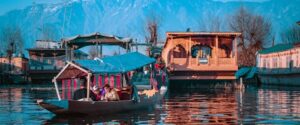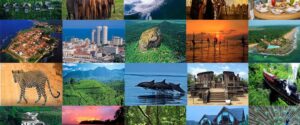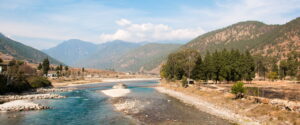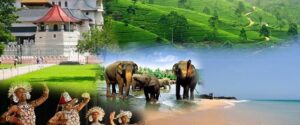Rs. 42,000/- Per Person
Package Inclusion
✤ Pickup & Drop Ex Bagdogra Airport
✤ 06 Nights & 07 Days Accommodation in 3 Star Properties
✤ Meal Plan MAP (Breakfast & Dinner) Meal Plan
✤ All sightseeing in Thimphu, Paro & Punakha
✤ Bhutan SDF Charges
✤ All Transfers
✤ Travel Insurance
✤ Tour Guide Charges
✤ All Parking charges & Driver Expenses
✤ All Permit & Taxes
Phuentsholing - (02 Nights) - Hotel Damchen / Hotel Asian Kitchen / Similar
Inclusion
Bed, Breakfast & Dinner
Exclusion
Lunch
Thimphu - (02 Nights) - The B.D. Hotel / Similar
Inclusion
Bed, Breakfast & Dinner
Exclusion
Lunch
Paro - (02 Nights) - Tsherim Resort / Similar
Inclusion
Bed, Breakfast & Dinner
Exclusion
Lunch
Child Rates
Package Exclusion
✤ Any Personal Expenses
✤ Any Train fare & Flight Fare
✤ Any Entry Fees in a place like zoos, parks, Monasteries Etc.
✤ Any Extra Sightseeing other than those mentioned above in the itinerary.
✤ Anything that is not mentioned in the inclusion..
Accomodation
Detailed Itinerary: -
RECEIVING FROM BAGDOGRA AIRPORT / NJP RLY STATION & TRANSFER TO PHUENTSHOLING, NIGHT STAY AT PHUENTSHOLING: -
Phuentsholing (alt. 300m / 985 ft) - The frontier town, it is a thriving commercial center, situated directly at the base of Himalayan foothills. It is a fascinating place where different ethnic groups mingle prominently Indian, Bhutanese Kharbandi Goenpa Phuentsholing, and Nepalese. Being the border town, Phuentsholing serves as the convenient entry/exit point for Bhutan and also the important link to visit the Indian states of West Bengal, Sikkim, and Assam. OVERNIGHT STAY AT PHUENTSHOLING.
AFTER BREAKFAST, COMPLETE IMMIGRATION FORMALITIES & TRANSFER TO THIMPHU, NIGHT STAY AT THIMPHU: -
Thimphu (alt. 2400m/7875ft) - The capital town of Bhutan and the center of government, religion, and commerce, Thimphu is a unique city with an unusual mixture of modern development alongside ancient traditions. Although not what one expects from a capital city, Thimphu is still a fitting and lively place. Home to civil servants, expatriates, and monk bodies, Thimphu maintains a strong national character in its architectural style. OVERNIGHT STAY AT THIMPHU.
THIMPHU CITY FULL DAY SIGHTSEEING & NIGHT STAY AT THIMPHU: -
Places of interest in and around Thimphu Memorial Chorten: - This stupa was built in 1974 in memory of Bhutan's third King, His Late Majesty, King Jigme Dorji Wangchuk, who is popularly regarded as the Father of modern Bhutan. The paintings and statues inside the monument provide a deep insight into Buddhist philosophy. National Library: - The history of Bhutan lies imprinted in archaic texts, which are preserved at the National Library. Besides thousands of manuscripts and ancient texts, the library also has modern academic books and printing blocks for prayer flags. The Folk Heritage Museum (Phelchey Toenkhyim): - It is dedicated to connecting people to the Bhutanese rural past through exhibits, demonstrations, educational programs, and documentation of rural life. The principal exhibit in the museum is a restored three-story traditional rammed mud and timber house, which dates back to the mid-19th century. The design and form of the house are that of an average household in the Wang area during that era. The age of the structure demonstrates the durability and performance of the building materials. From ground to top floor, household objects, typical domestic tools, and equipment that would have been used by a family during that period are put on display. The museum is also developing some of the native trees and plants that were used for various domestic purposes in rural households. National Textile Museum: - With the opening of the Textile Museum, under the patronage of Her Majesty the Queen Ashi Sangay Choden, Bhutanese textiles have reached new heights as one of the most visible distinct art forms. The textile museum has opened its exhibition on six major themes - warp pattern weaves, weft pattern weaves, the role of textiles in religion, achievements in textile arts, textiles from indigenous fibers, and the royal collection. The crowns of Bhutan's Kings, namzas (dresses), the first version of the Royal Crown, and other accessories used by members of the Royal family can be found in the museum. The goal of the museum is to gradually become a center for textile studies that will carry out documentation, research, and studies on Bhutanese textiles. Trashichhoedzong:- Also known as the "fortress of the glorious religion", it was initially built in 1641 and later rebuilt in its present form by King Jigme Dorji Wangchuk in 1965. The Dzong houses, the main secretariat building which houses the throne room of His Majesty, the King of Bhutan. The National Assembly Hall is housed in a modern building on the other side of the river from the Dzong. During the warmer summer months, the monk body headed by His Holiness, the Je Khenpo, makes its home in the Dzong. Handicrafts Shops: - A wide assortment of colorful, hand-woven textiles and other craft products is available for purchase at the government-run Handicrafts Emporium and many smaller crafts shops around the town. Changangkha Lhakhang: - It is a fortress-like temple and monastic school perched on a ridge above Thimphu, south of Motithang. The temple was established in the 12th century on a site chosen by Lama Phajo Drugom Shigpo, who came from Tibet. The central statue here is Chenrezig in a manifestation with 11 heads. From the temple courtyard, there is a fascinating view of Thimphu Valley. Craft Bazaar: - Organized on Tuesday and Wednesday in Centenary Farmer’s Market, under the patronage of the Department of Cottage & Small Industry and in collaboration with the Department of Culture, Tourism Council and the Department of Agriculture Marketing and Cooperatives, this market offers genuine Bhutanese arts & crafts thus contributing in promotion, protection, and preservation of traditional arts. Junghi Handmade Paper Factory: - Junghi Paper factory comprises two enterprises; the unit in Thimphu produces traditional handmade paper from natural plants mainly from the ‘Daphne’ plant species which is insect-resistant. The other unit in Jimina, 22 km from the center of Thimphu town, recycles waste papers. Traditional handmade papers are widely used for religious scripts, packing materials, hand-carry bags, lampshades, envelopes, and calendars. The paper looks a lot like Japanese washi, and in fact, a lot of Bhutanese paper is exported to Japan also. Buddha Point (Kuensel Phodrang):- Located a short drive from Thimphu city center, visitors can get a good overview of the Thimphu valley from Buddha Point (Kuensel Phodrang). You can pay your obeisance and offer prayers to the Buddha, the largest statue in the country, and then walk around and take a glimpse of the valley. Simply Bhutan Museum: - Simply Bhutan is an exclusive project under the Simply Bhutan Museum Bhutan Youth Development Fund (YDF), built to offer a unique experience to its visitors. It is a living museum and studio encapsulating the cultural heritage of the Bhutanese people. A distinctive feature of Simply Bhutan is that it is fully operated by young people and job seekers, who receive here-on-the-job training in basic business & management skills, customer care, and other spheres of life. The fund generated through Simply Bhutan is utilized to run many of the youth development programs for vulnerable and disadvantaged youth under YDF. Hence as a visitor, while you get to experience and enjoy this special place, you are also helping to ‘make a better today’, ‘a brighter tomorrow’, for the youth of Bhutan. Drubthob Goema / Zilukha Nunnery: - Perched on a promontory, overlooking picturesque Trashichhoedzong and Golf course, it is the only nunnery in the capital known as Zilukha Anim Dratsang, once belonged to the Drubthob (Realized one) Thang Thong Gyalpo often referred to as The King of the open field (In the early 15th century with his multiple talents he popularly became the Leonardo da Vinci of the Great Himalayas). You may interact here with some of the nuns who have devoted their lives to spirituality and Buddhism. Devi Mandir: - Hinduism is the second largest religious affiliation in Bhutan, covering about 22.6% of the population, according to the Pew Research Center 2010. It is followed mainly by the ethnic Lhotshampa. The Shaivite, Vaishnavite, Shakta, Ganapathi, Puranic, and Vedic schools are represented among Hindus. Hindu temples exist in southern Bhutan, and Hindus practice their religion in small- to medium-sized groups. About 75% of the population of Bhutan is Buddhist OVERNIGHT STAY AT THIMPHU.
THIMPHU TO PUNAKHA VIA DOCHULA PASS SIGHTSEEING & EVENING TRANSFER TO PARO, NIGHT STAY AT PARO: -
Punakha (alt. 1300m/4265ft) - Punakha served as the capital of Bhutan until and still is the winter seat of Je Khenpo (the chief abbot). Blessed with a temperate climate and owing to its natural drainage from Pho Chhu (male) and Mo Chhu (female) rivers, the Punakha valley produces abundant crops and fruits. There are splendid views of the distant Himalayas at Dochula pas (alt. 3,050m) on Thimphu – Punakha Road. Places of interest in and around Punakha Punakha Dzong:- Built strategically at the junction of Pho Chhu and Mo Chhu rivers in 1637, by Shabdrung Ngawang Namgyal to serve as the religious and administrative center of the region, Punakha Dzong has played an important role in Bhutan's history. Damaged by four catastrophic fires and an earthquake, the Dzong has been fully restored by the present King. The Dzong is open for visitors during the Punakha festival and in the summer months when the monk's body moves to Thimphu. Chimi Lhakhang: - The Chimi Lhakhang, situated on a hillock in the center of the valley, is dedicated to Lama Drukpa Kenley, who in the late 15th century used humor, songs, and outrageous behavior to dramatize his teachings and due to this also known as "Divine Madman". This temple is also known as the temple of fertility. It is widely believed that couples who do not have children and want one, if they pray at this temple, are usually blessed with a child very soon. It is about a 30-minute walk across the field from the road to the temple. The trail leads across rice fields to the tiny settlement of Pana, meaning "field". It then follows a tiny stream downhill to Yoaka and across more fields before making a short climb to Chimi Lhakhang. Do Chula Pass: - The Dochu La ( Dochu Pass la means pass in Dzongkha) is a mountain pass in the snow-covered Himalayas within Bhutan on the road from Thimphu to Punakha where 108 memorial chortens or stupas known as "Druk Wangyal Chortens" have been built by Ashi Dorji Wangmo Wangchuk, the eldest Queen Mother. Apart from the chortens there is a monastery called the Druk Wangyal Lhakhang (temple), built in honor of the fourth Druk Gyalpo (head of the state of Bhutan), Jigme Singye Wangchuck the open grounds in its front yard is a venue for the annual Dochula Druk Wangyel Festival. The pass with 108 memorial chortens is adjacent to the country's first Royal Botanical Park Lamperi Botanical Park Royal Botanical Park, Lamperi is the first botanical park in Bhutan and forms the backdrop of the Dochula Pass. The park forms a biological corridor of 47 square miles (120 km2) between the Jigme Singye Wangchuck National Park and the Jigme Dorji Wangchuck National Park and has a popular botanical garden within it which is spread over an area of 125 acres (51 ha). This is planted with 46 species of rhododendron of which 18 species are native to the park while the other 26 species are brought from other regions of Bhutan and planted here. These bloom from mid-March to early August. The botanical garden of the park has within its limits 108 stupas (shortens) at the Dochula Pass (3100m). The park was formally declared open in June 2008 to mark the anniversary of the Coronation of King Jigme Kesar Namgyel Wangchuk and the centenary of Bhutan's monarchic rule. Mr. Phenden Gyamtsho is the Park Manager, heading a technical team of young, humble, and hardworking staff. The park facility center opens from 9 a.m. to 5 p.m. in summer and from 9 a.m. to 4 p.m. in winter. The park seriously embarks on waste management advocacy programs to educate the general public. Garbage IN and garbage OUT policy is being emphasized Suspension Bridge:- A suspension bridge is a type of bridge in which the deck is hung below suspension cables on vertical suspenders. The first modern examples of this type of bridge were built in the early 1800s. Simple suspension bridges, which lack vertical suspenders, have a long history in many mountainous parts of the world. River Side: -Thimphu Dzongkha: is the capital and largest city of Bhutan. It is situated in the western central part of Bhutan, and the surrounding valley is one of Bhutan's dzongkhags, the Thimphu District. The ancient capital city of Punakha was replaced by Thimphu as capital in 1955, and in 1961 Thimphu was declared as the capital of the Kingdom of Bhutan by the 3rd Druk Gyalpo Jigme Dorji Wangchuck. OVERNIGHT STAY AT PARO.
PARO FULL DAY SIGHTSEEING, NIGHT STAY AT PARO: -
Paro (alt. 2200m/7218ft) - The beautiful valley of Paro encapsulates within itself a rich culture, scenic beauty, and hundreds of myths and legends. It is home to many of Bhutan's oldest temples and monasteries, the National Museum, and the country's only airport. Mount. Chomolhari (7,314m) reigns in white glory at the northern end of the valley and its glacial water plunges through deep gorges to form Pa Chhu (Paro River). Paro is also one of the most fertile valleys in the Kingdom producing a bulk of the locally famous red rice from its terraced fields. Places of interest in and around Paro Rinpung Dzong:- Built-in 1646 by Shabdrung Ngawang Namgyal, the first National Museum Parospiritual and temporal ruler of Bhutan, the Dzong houses the monastic body of Paro, the office of the Dzongda (district administrative head) and Thrimpon (judge) of Paro district. The approach to the Dzong is through a traditional covered bridge called Nemi Zam. A walk through the bridge, over a stone inlaid path, offers a good view of the architectural wonder of the Dzong as well as the life around it. It is also the venue of Paro Tshechu, held once a year in the spring. Ta Dzong:- One-time watch tower built to defend Rinpung Dzong during inter-valley wars of the 17th century, since 1967 Ta Dzong has served as the National Museum of the country. It holds a fascinating collection of art, relics, religious thangka paintings, and Bhutan's exquisite postage stamps. The museum's circular shape augments its varied collection displayed over several floors. Kyichu Lhakhang:- It is one of the oldest and most sacred shrines of the Kingdom dating back to the 7th century (the other is Jambey Lhakahng in Bumthang). The Lhakhang complex is composed of two temples. The first temple was built by Tibetan King, Songtsen Gampo in the 7th century, and in 1968, H.M. Ashi Kesang, the Queen Mother of Bhutan, built the second temple in the original pattern. Farm House (traditional village house):- The beauty of Paro Valley is embellished by a cluster of quaint farmhouses. Bhutanese farmhouses are very colorful, decorative, and traditionally built without the use of a single nail. All houses follow the same architectural pattern. A visit to Farm House is very interesting and offers a good glimpse into the lifestyle of a farmer. Dungtse Lhakhang:- To the west of the road is Dungtse Lhakhang, a chorten-like temple. This unusual building was built in 1433 by the iron bridge builder Thangtong Gyalpo. It has three floors representing hell, earth, and heaven and the paintings inside are said to be some of the best in Bhutan. Beyond Dungtse Lhakhang, to the east of the road, the tiny Pana Lhakhang is quite old and is believed to have been built in the seventh century. Airport View Point: - Paro International Airport (Dzongkha: romanized: paro gram thang) (IATA: PBH, ICAO: VQPR) is the sole international airport of the four airports in Bhutan. It is 6 km from Paro in a deep valley on the bank of the river Paro Chhu. With surrounding peaks as high as 5,500 m (18,000 ft), it is considered one of the world's most challenging airports, and only eight pilots are certified to land at the airport Flights to and from Paro are allowed under visual meteorological conditions only and are restricted to daylight hours from sunrise to sunset. Paro airport was the only airport in Bhutan until 2011 Paro Airport is accessible by road, 6 km from Paro city, and 54 from Thimphu by Paro-Thimphu Road. Taktshang Lhakhang (Tiger's Nest):- It is one of the most famous of Bhutan's monasteries, The Tiger's nest is Paroperched on the side of a cliff 900m above the Paro valley floor. It is said that Guru Rinpoche arrived here on the back of a tigress and meditated at this monastery hence it is called "Tiger's Nest". This site has been recognized as a most sacred place and was visited by Shabdrung Ngawang Namgyal in 1646 and is now visited by all Bhutanese at least once in their lifetime. On 19 April 1998, a fire severely damaged the main structure of the building but now this Bhutanese jewel has been restored to its original splendor. OVERNIGHT STAY AT PARO
DAY 6: PARO TO PHUENTSHOLING, NIGHT STAY AT PHUENTSHOLING:-
Phuentsholing (alt. 300m / 985 ft) - The frontier town, it is a thriving commercial centre, situated directly at the base of Himalayan foothills. It is a fascinating place where different ethnic groups mingle prominently Indian, BhutaneseKharbandi Goenpa Phuentsholing, and Nepalese. Being the border town, Phuentsholing serves as the convenient entry/exit point for Bhutan and also the important link to visit the Indian states of West Bengal, Sikkim, and Assam. OVERNIGHT STAY AT PHUENTSHOLING.
AFTER BREAKFAST, PHUENTSHOLING TO BAGDOGRA AIRPORT DROP: -
After breakfast, drive to Bagdogra Airport / Njp station to onwards your destination.
Note: Itinerary are subject to change due to unavoidable circumstances and the extra cost occurred has to be paid by the clients.
Visa Requirement

Risk and Liabilities
Rates Validity
Arrival and Departure Experiences
Dining Details
WHY BOOK WITH US?
- Best Price Guarantee
- Customer care available 24/7
- Free Travel Insureance
- Hand-picked Tours & Activities
GET A QUESTION?
Do not hesitage to give us a call. We are an expert team and we are happy to talk to you.
Holidays@lookbookfly.com
+91 858-888-1230
Popular Tours
Other Facilities
CANCELLATION & REFUND POLICY
❃ Airfare / Train fare / Cruise Fare / Ferry fare – 100% cancellation once ticket is issued.
❃ 10 days prior to date of event or in case of no-show, 100% retention is payable
❃ 10-30 Days prior to date of event, 75% retention is payable
❃ 30-45 days prior to date of event, 50% retention is payable
❃ 45 Days or prior, service fee of 10% of total package amount is payable
❃ No refunds in case of early check-out decrease in no. of pax, meals not consumed.ROW Holidays applies exactly the same Hotel/Service providers’ cancellation policy and any refunds applicable will be issued only after ROW Holidays has received the same from the Hotel/Airline/Service providers.
❃ ROW Holidays applies exactly the same Hotel/Service providers’ cancellation policy and any refunds applicable will be issued only after ROW Holidays has received the same from the Hotel/Airline/Service providers.








